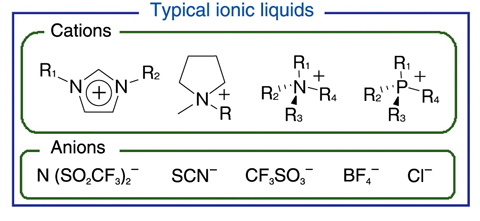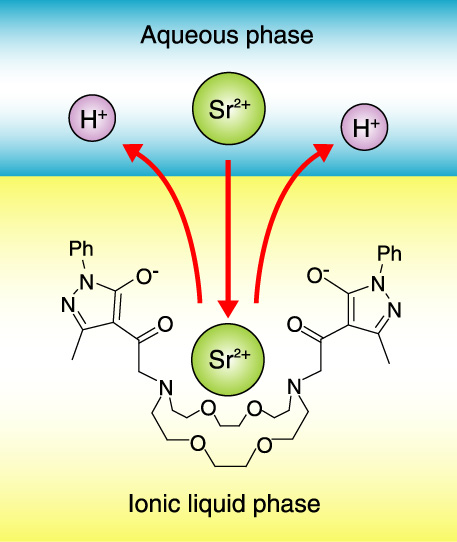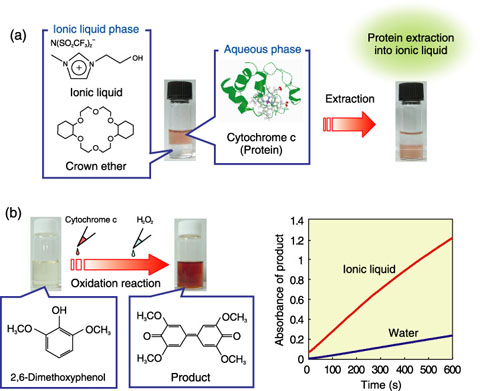
Fig.8-13 Molecular structures of typical ionic liquids

Fig.8-14 Extraction of strontium ions into ionic liquids with diazacrown ether bearing β-diketone fragments

Fig.8-15 Protein extraction into ionic liquid and biocatalytic reaction
Ionic liquids, which are entirely composed of ions, are room temperature molten salts (Fig.8-13). Ionic liquids have potential as a green solvent, because they possess attractive properties such as negligible volatility and nonflammability. Their chemical and physical properties are effectively tunable, depending on the combination of cations and anions. For example, ionic liquids can be made hydrophobic while retaining ionicity and high polarity. Thus one can synthesize ionic liquids that are immiscible in water and organic solvents. Their unique properties have encouraged us to develop novel extraction separation systems using ionic liquids as extracting media.
Solvent extraction is one of the most effective separation methods for hydrometallurgy, reprocessing of nuclear wastes and recovery of rare metals from industrial wastes. We investigated extraction of precious metal ions, lanthanides and actinides using various extractants into ionic liquids as alternative replacements for conventional organic solvents. Application of ionic liquids was found to provide unprecedented enhancement of extraction performance compared with a conventional organic solvent system.
In solvent extraction, it has sometimes been observed that extraction performance is dramatically enhanced by using two different extractants compared with using only a single extractant. This phenomenon is known as a synergistic effect. Recently, we synthesized diazacrown ether bearing two β-diketone fragments as a novel extractant, and applied it to the extraction of strontium ions (Sr2+). The extractant generates an intramolecular synergistic effect only in the ionic liquid extraction system, and demonstrated very efficient extraction of Sr2+ compared with an organic solvent extraction system (Fig.8-14).
Furthermore, we succeeded in extracting a protein into ionic liquids, and demonstrated that the protein in ionic liquids provides a new functionality to catalyze oxidation reactions (peroxidase). As shown in Fig.8-15, a hydroxyl-group-containing ionic liquid that has high affinity for the heme protein cytochrome c was synthesized, and the ionic liquid with a crown ether that can recognize the surface of cytochrome c was found to be capable of quantitative partitioning of cytochrome c. We clarified that cytochrome c in the ionic liquid causes a structural transformation, which triggers its functional conversion from an electron transfer protein to peroxidase.